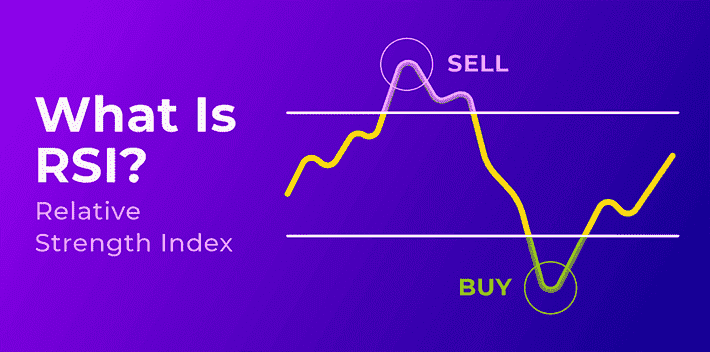May 16, 2025, at 01:39 PM CEST, Moody’s Investors Service announced a historic downgrade of the United States’ sovereign credit rating. It was lowered from Aaa to Aa1, removing the country’s last triple-A rating from a major credit rating agency.
Moody’s cited concerns about a national debt of over $36 trillion, federal deficits projected to reach 9% of GDP by 2035, and rising interest payments. The move has sparked intense debate across financial, political, and academic sectors.
This is the third major downgrade after S&P in 2011 and Fitch in 2023, marking a major shift in how U.S. fiscal health is perceived.
This article presents a thorough review of the downgrade. It examines the background, causes, market impact, political effects, history, opposing views, and long-term consequences. The goal is to provide a clear and useful guide for readers seeking to understand the event and its global implications.
Background on Sovereign Credit Ratings
Sovereign credit ratings measure a country’s ability to repay its debts. They are issued by agencies like Moody’s, S&P, and Fitch.
These ratings influence interest rates, investor confidence, and economic decisions. A top-tier rating like Aaa or AAA signals low risk, helping countries borrow more cheaply.
A downgrade increases perceived risk, leading to higher borrowing costs and financial stress.
The U.S. held a triple-A rating from all three agencies for decades due to its economic size and reserve currency status.
That began to change:
- In 2011, S&P downgraded the U.S. during a debt ceiling crisis.
- In 2023, Fitch cited worsening finances and political problems.
- In 2025, Moody’s acted due to rising debt and deficits.
Moody’s downgrade removes the last top rating, highlighting fears about the country’s financial path.
Reasons for the Moody’s Credit Rating Downgrade
Moody’s downgrade was based on both long-term fiscal trends and recent political actions. The agency pointed to four key issues:
1. Rising National Debt
The U.S. debt hit $36.2 trillion. The debt-to-GDP ratio is expected to rise from 98% in 2024 to 134% by 2035.
2. Expanding Deficits
Federal deficits could reach 9% of GDP by 2035, up from 6.4% in 2024. Key reasons include entitlement spending and lower tax revenues.
3. Growing Interest Costs
High interest rates have raised the cost of debt service. Policy proposals like extending 2017 tax cuts may add $4 trillion more to the deficit.
4. Political Gridlock
Lawmakers have failed to agree on solutions. Moody’s sees no clear plan to fix the debt problem.
These issues show that U.S. finances are weakening. Moody’s downgrade brings it in line with earlier moves by S&P and Fitch.
Market Impact of the Moody’s Credit Rating Downgrade
The downgrade caused immediate market reactions, showing how closely credit ratings and finance are linked.
Stock Market Volatility
On May 19, 2025, U.S. stock futures dropped sharply. The Dow Jones, S&P 500, and Nasdaq all fell.
Rising Treasury Yields
Bond yields rose fast. The 10-year Treasury yield jumped from 3.86% (Apr 4) to 4.5% (Apr 9). The 30-year yield passed 5%.
Consumer and Business Impact
Higher yields may raise rates for mortgages, credit cards, and business loans. This could slow spending and growth.
Global Effects
Investors fear the downgrade could hurt the U.S. dollar’s reserve currency status, leading to market swings in other countries.
Political and Policy Implications
The downgrade sparked new political fights over U.S. fiscal policy. Leaders from both parties reacted.
Biden Administration’s Response
Treasury Secretary Scott Bessent called the downgrade a “lagging indicator”. He said it reflects past problems and unfairly blames current policies.
Criticism from Lawmakers
Senator Chris Murphy warned that the downgrade could lead to a recession and higher loan costs.
Tax Cut Debate
The downgrade came as lawmakers debated extending the 2017 tax cuts. On May 16, the GOP-led Budget Committee rejected the extension, citing deficit concerns.
Long-Term Challenges
Big issues like entitlement spending need action. But political divisions have made cooperation very difficult.
The downgrade has now become central in discussions about taxes, debt, and spending.
Expert Opinions and Analyses
Economists and financial experts offered a range of views:
Moody’s View
The agency said the downgrade reflects rising debt and interest burdens. These are higher than in other similarly rated countries.
Academic Perspective
Stanford professor Darrell Duffie said the downgrade shows the U.S. debt is unsustainable. He urged Congress to act on revenues and spending.
Market Analysts
Brian Rehling from Wells Fargo noted the likely impact on consumers. He said borrowing costs would rise.
Global Concerns
Bloomberg analysts said the downgrade could hurt U.S. credibility in global markets. It may also weaken the dollar’s reserve status.
These opinions show the downgrade is serious—even if the full effects are not immediate.
Historical Context and Comparisons
This downgrade fits a longer trend of concerns about U.S. debt management.
2011 – S&P Downgrade
S&P lowered its rating during a debt ceiling fight. It caused market shocks but had limited long-term effects.
2023 – Fitch Downgrade
Fitch cited worsening fiscal conditions and political gamesmanship over debt ceilings.
Smaller Agencies
Agencies like Egan-Jones and Dagong have also downgraded the U.S., but with less impact.
Today, the U.S. shares a rating with countries like Canada and Australia, which have lower debt levels.
These downgrades show changing views of U.S. credit, even though the dollar remains the world’s top currency.
Counterarguments and Criticisms on Moody’s Credit Rating Downgrade
Not everyone agrees with Moody’s decision. Critics raised several points:
“Lagging Indicator” Argument
Treasury Secretary Bessent said Moody’s is looking backward. He pointed to strong growth and low unemployment as signs of health.
Reserve Currency Status
Many note that the U.S. dollar’s role as the world’s currency gives it special advantages. It can still borrow cheaply, even with high debt.
Flawed Models
Some experts argue that rating models ignore U.S. strengths like innovation and deep capital markets.
These arguments suggest the downgrade may be less damaging than it appears. But they don’t deny the growing debt risk.
Future Outlook and Potential Scenarios
The downgrade raises big questions about the U.S.’s future finances. Several outcomes are possible:
1. Fiscal Reform
Lawmakers might agree to cut spending or raise taxes. But political fights make that hard.
2. More Deterioration
If no action is taken, debt and deficits will keep growing. That could bring more downgrades.
3. Market Changes
Investors might demand higher interest on U.S. debt, raising costs across the economy.
4. Global Impact
If confidence falls too far, the dollar’s global role could weaken. That would affect trade and investment worldwide.
Moody’s has a stable outlook for now. But more bad news could prompt future downgrades. The U.S. may also struggle to respond to new crises under heavy debt.
Conclusion
The Moody’s downgrade of the U.S. credit rating on May 16, 2025, is a major warning. It reflects real concerns about rising debt, widening deficits, and weak political action.
Markets responded quickly. Politicians and experts are now debating the causes and consequences.
Some dismiss the move, citing the strength of the U.S. dollar. But all three major agencies have now downgraded the country, signaling a major change in how the U.S. is viewed.
This article has laid out the facts, expert views, and history to help readers understand what this downgrade means. The road ahead will depend on whether U.S. leaders take real steps to fix the debt and protect the country’s global financial position.
America got downgraded—upgrade your insights on our Discord.
Click here to read our latest article- Taiwan Dollar Surge and It’s Impact



